
About Ashfall
Fossil Finds Gallery
Feature Fossil Find of 2017
A variety of new finds were unearthed in the Hubbard Rhino Barn in 2017. Two skeletons of three-toed horses (one of which is intact) as well as other finds of interest including a partial camel skeleton (a rare find in the Rhino Barn), a number of fossil tracks from bone-crushing dogs that scavenged the carcasses during the volcanic ash storm, and a scattering of bone from a rhino calf.
-
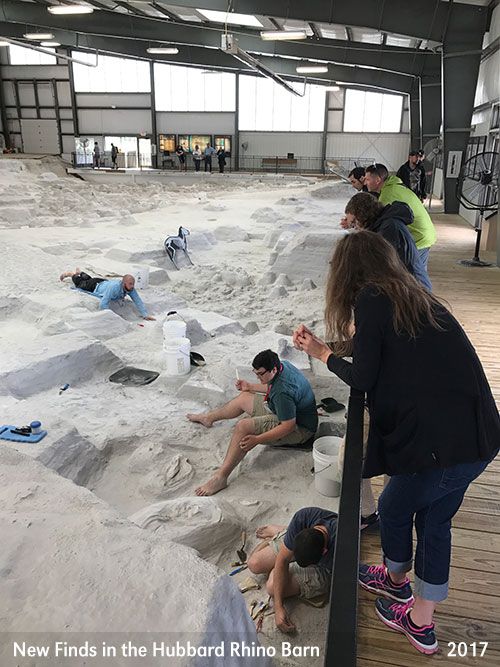
Student paleontologists were excavating right next to the viewing deck in 2017.
-
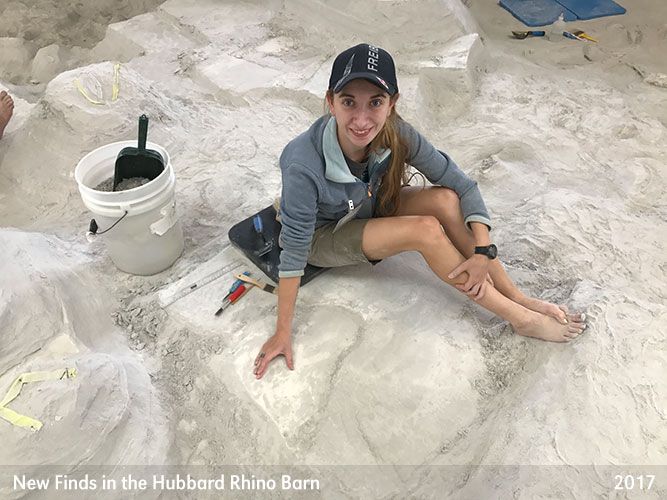
Tedious excavation produced a number of fossil tracks from large bone-crushing dogs. Cienna’s thumb and forefinger span a track that is 3” in diameter.
-
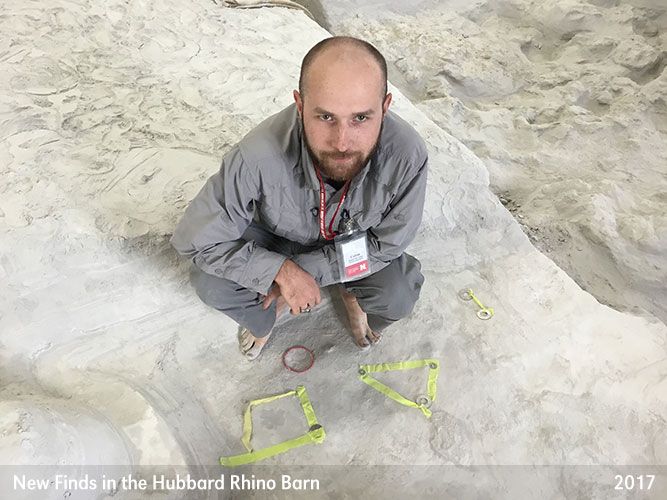
Colton revealed several new dog tracks. Virtually all of the bone-crushing dog tracks found so far have been similar in size and conformation.
-

One exception to track size was a smaller-sized dog track found by Regan.
-
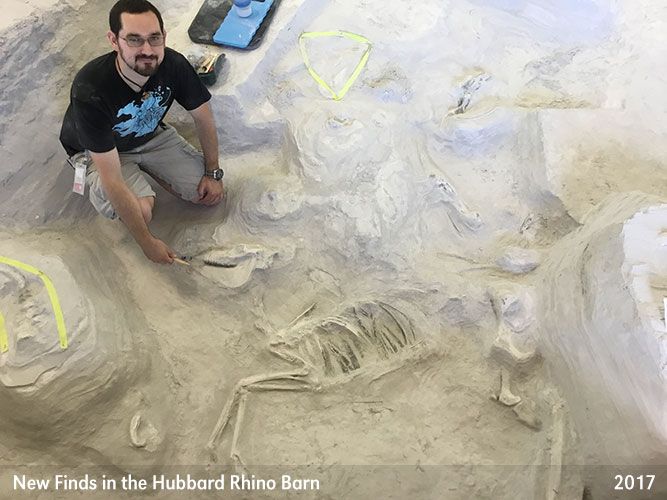
Raymond discovered and exposed a large three-toed horse, Neohipparion affine. Another remarkable example of an intact skeleton from the Ashfall site.
-

Riley assisted Regan and Clark in revealing a partial camel skeleton. The camel carcass was scavenged by the bone-crushers before burial in the volcanic ash.
2016
A stunning fossil was found in the 2016 season. Ashfall Fossil Beds summer intern Mikayla Struble (Montana State University) was conducting work in the Hubbard Rhino Barn when she uncovered the skull of a three-toed horse skeleton identified as Pseudhipparion gratum.
-
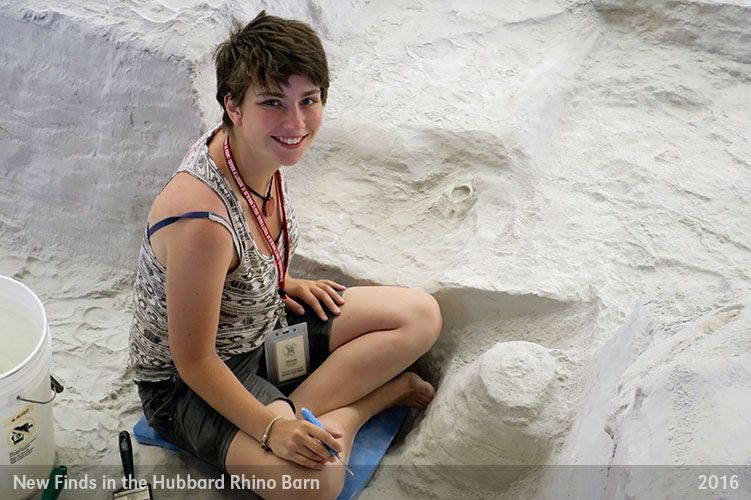
The first new discovery of 2016 took place on June 27th. The eye socket and cheek bone of a horse skull was revealed in the volcanic ash bed in Ashfall’s Hubbard Rhino Barn by intern Mikayla Struble.
-
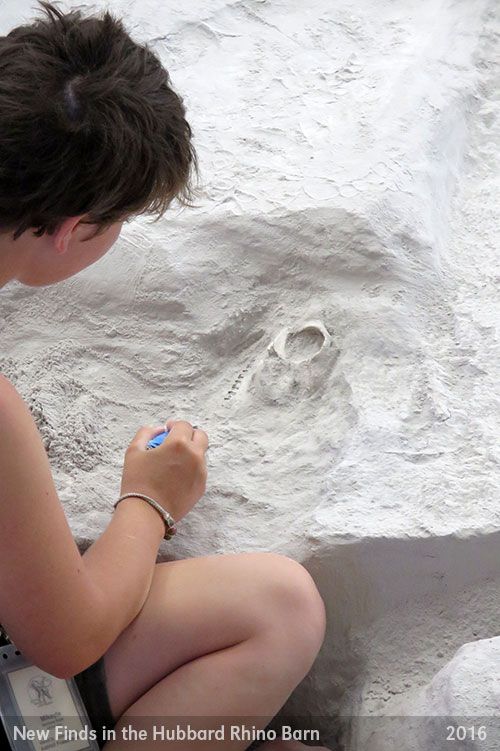
Within an hour, the cheek teeth were visible. The size of the skull lent the impression that this skull belonged the smallest of the Ashfall horse species, Pseudhipparion gratum; a three-toed horse that was the size of a large dog.
-

June 29: Two days after the skull was discovered, the skull and lower jaw have been completely uncovered. Rick Otto, Park Superintendent, was able to determine from the exposed teeth that the small horse had been a fully mature male at the time of its death.
-

July 2: The neck vertebrae and shoulder blade have been exposed. The shoulder blade (scapula) was also in contact with the upper forearm bone (humerus) which was a good indication that this could be a complete skeleton.
-
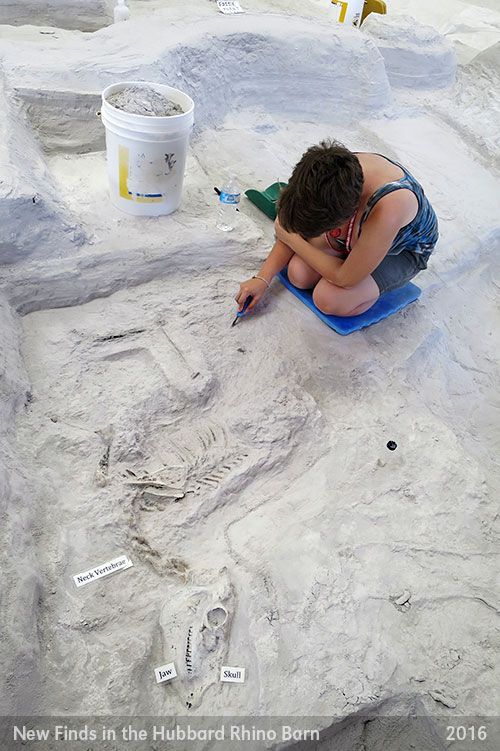
July 6: Part of the rib cage and parts of the back and front right legs are exposed. Mikayla had some difficulty locating the femur of the back right leg as it is located a bit further away and higher up from the rest of the body than anticipated. This indicates a possible knee joint disarticulation. A bit of the pelvis can also be observed near Mikayla’s scalpel.
-
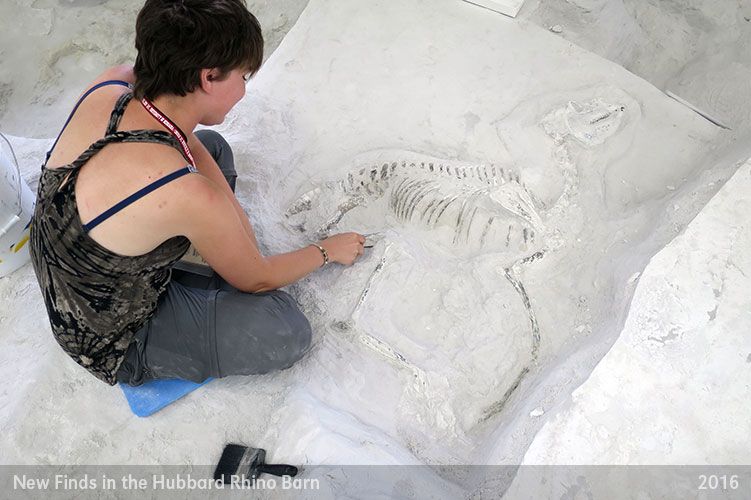
July 17: All of the vertebrae, all of the back right leg, and all of the front right leg have been uncovered. The pelvis, which was barely visible in the last picture, is also fully exposed. The two left legs, tail, and sternum have yet to be revealed.
-

July 23: The pelvis and the back left leg have been fully exposed. The foot of the newly revealed back left leg is turned at an angle that makes it easy to see all three toes of Pseudhipparion gratum distinctly.
-
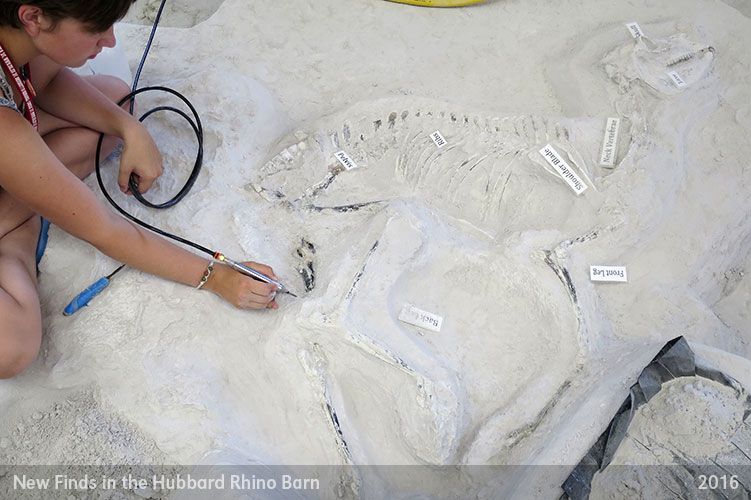
July 26: Mikayla Struble using an “air scribe.” Excavation at the Ashfall site is usually conducted with hand tools such as trowels, scalpels and dental picks. Most of the detailed work on the Pseudhipparion gratum skeleton was done with dental picks. However, some of the volcanic ash around this skeleton has been cemented together over time and become very hard, making it difficult to uncover the bones. Therefore, this harder ash must be removed with an “air scribe”, a tool that operates by air pressure and is a very small version of a jack hammer.
-

August 8: One part of the skeleton was hidden until today. Mikayla found the toes of the left front foot underneath the right front leg.
-
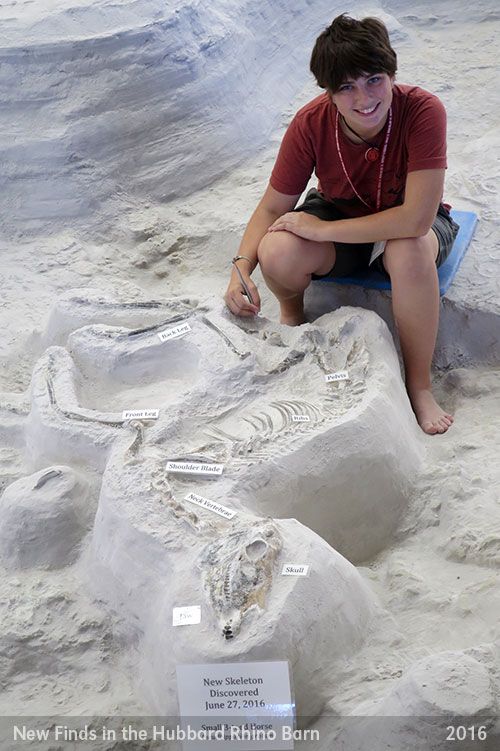
August 14: The volcanic ash from around the skeleton has been brushed away and the skeleton is now fully exposed and in full relief, only a few feet from where visitors stand on the boardwalk.
2015
-

Colton Snyder and Rachel Jones shared discovery and excavation of an adult female rhino, just feet from where visitors stand in the Hubbard Rhino Barn. Rachel returned in 2016 to finish excavation of the rhino.
-

Kayleigh Muillenberg meticulous excavation technique revealed the petite leg, foot and toe bones of a small carnivore. Leptocyon is considered to be one of the first members of the modern dog family.
2014
-
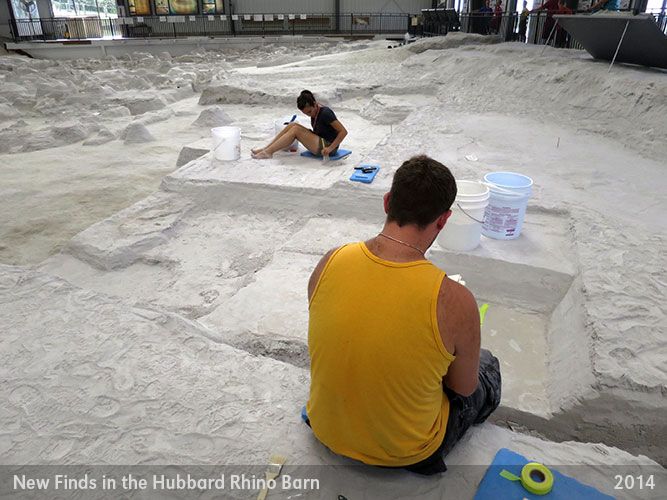
Meticulous removal of the volcanic ash layers by Jacob Grimes resulted in the discovery of a set of fossil tracks from a large bone-crushing dog.
-
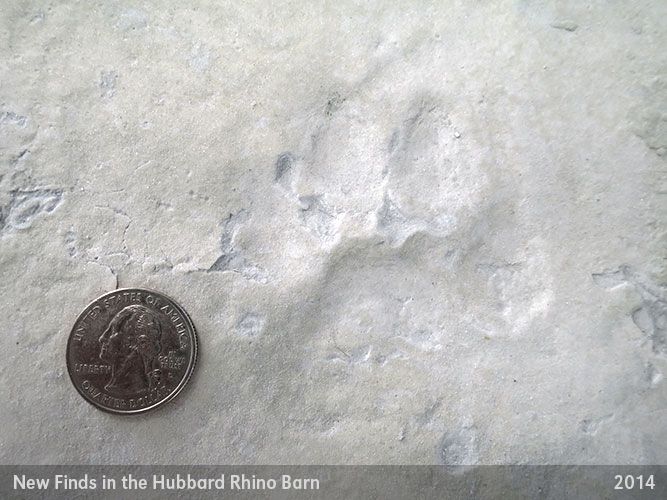
Close-up view of one fossil dog track. The tracks appear to be the size of a 100+ pound bone-crushing dog.
2013
-
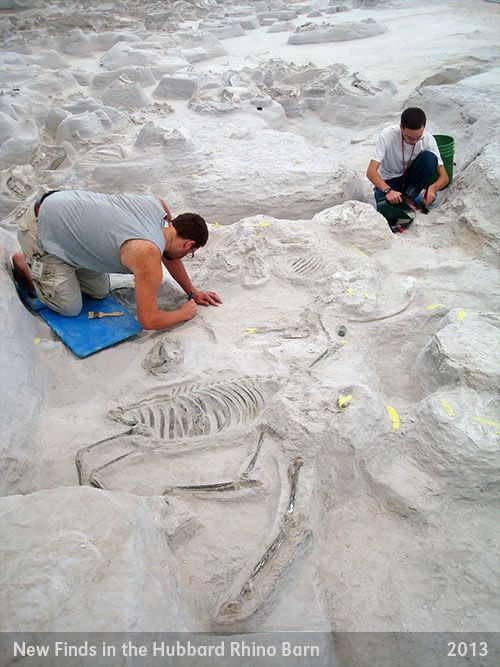
Two remarkable horse skeletons were unearthed in 2013. Neither was scavenged by bone-crushing dogs before burial. Neither is obscured by a rhino skeleton, which often prevents full view of smaller skeletons.
-

Jacob Grime’s horse is a large three-toed horse, Neohipparion affine.
-

Sam Wilton’s horse is a single-toed horse Pliohippus pernix.
-
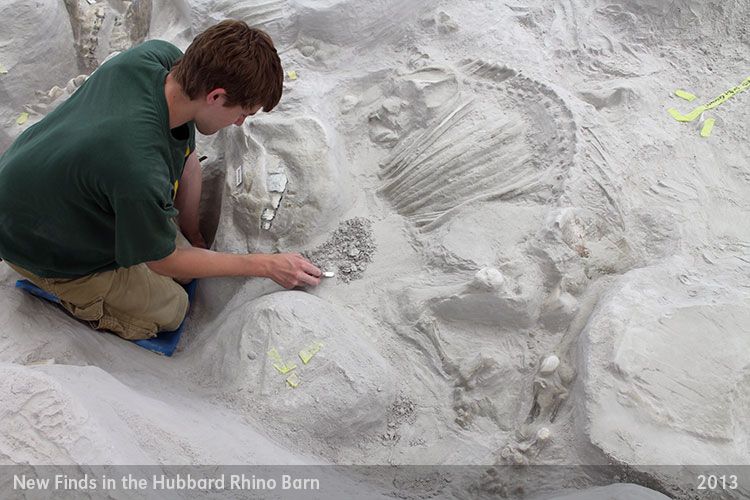
Jeremy McMullin revealed a sub-adult barrel-bodied rhino, and a young rhino calf. Both were adjacent to Sam Wilton’s horse skeleton.
2012
-

A closely situated group of rhinos was revealed in 2012. Here are six rhinos that are side-by-side some of which are overlapping. The skull of each rhino is circled.
-
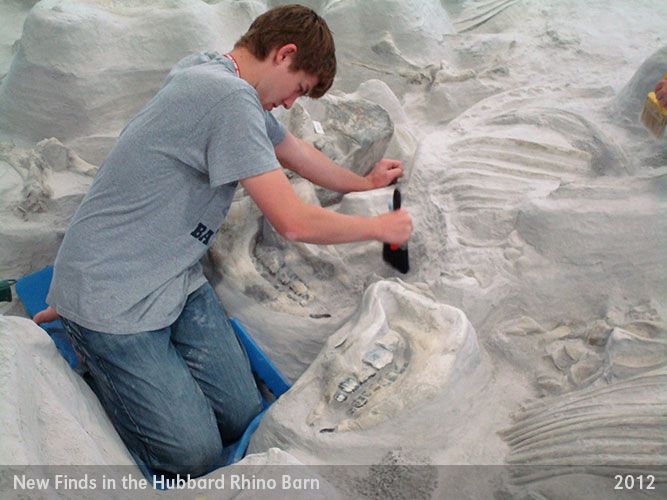
Jeremy McMullin is detailing one of the barrel-bodied rhino skeletons found in 2012.
2011
-
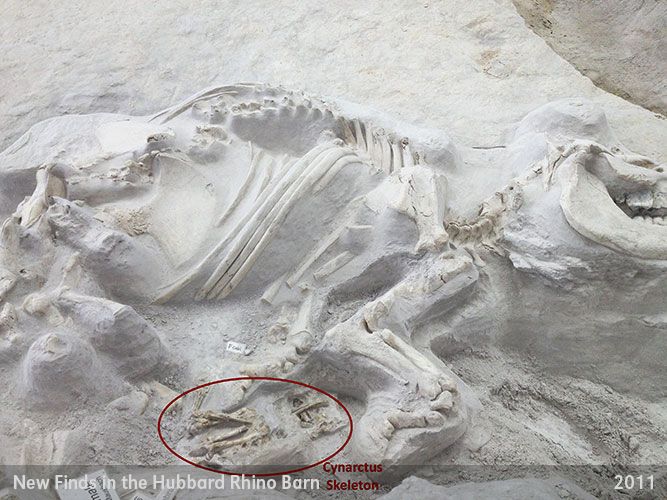
The small fossil dog found in 2010 was identified as Cynarctus (also known as a Raccoon Dog) when detailed excavation took place in 2011. The somewhat jumbled skeleton is underneath an adult bull rhino’s front legs.
-
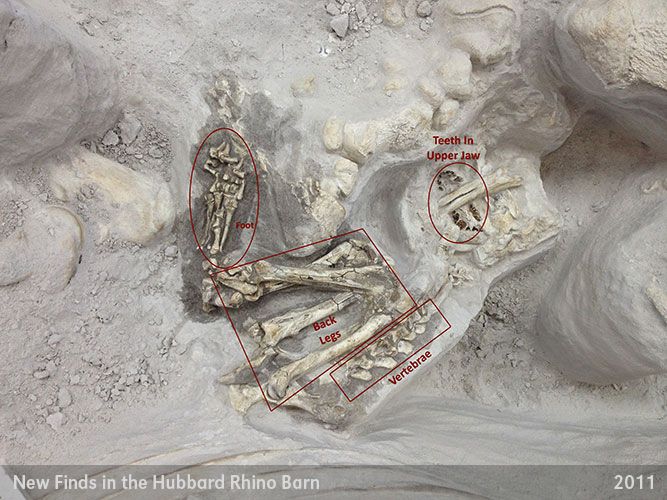
Close-up view of the Raccoon Dog skeleton. The remains of the Ashfall Cynarctus are some of the most complete known.
2010
-
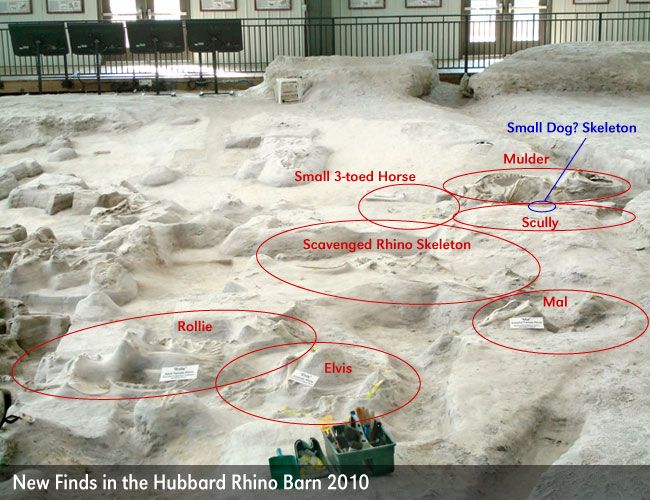
-
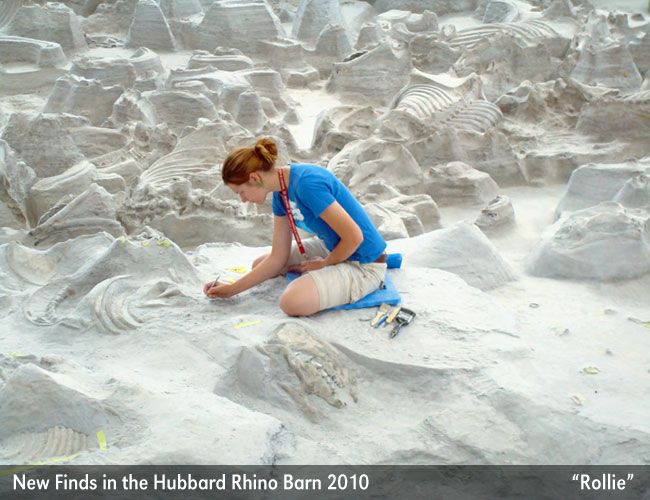
Stephanie C. excavates adult female Teleoceras Rollie. This skeleton was rolled onto its back by large bone-crushing dogs that scavenged the carcass.
-

Mulder is an adult male Teleoceras excavated by Amanda M. Scully, another rhino, is beginning to appear above the blue mat.
-
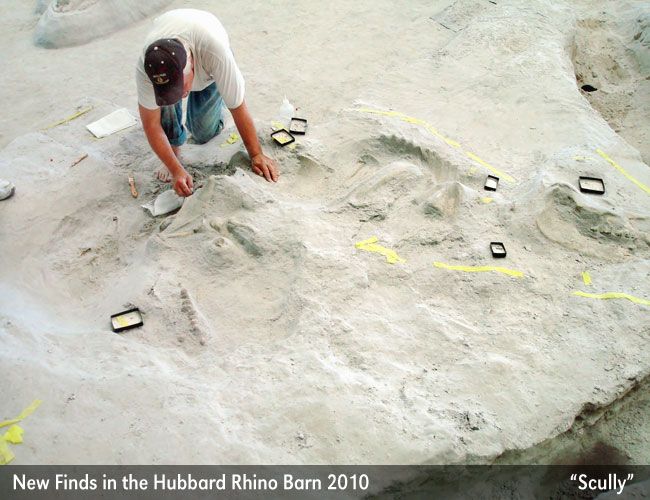
Museum Preparator Greg Brown and Scully. Scully is a juvenile female Teleoceras. Scully’s skull is resting on the back legs of Mulder. Intern Bill M. (not shown) revealed most of Scully’s skeleton.
-
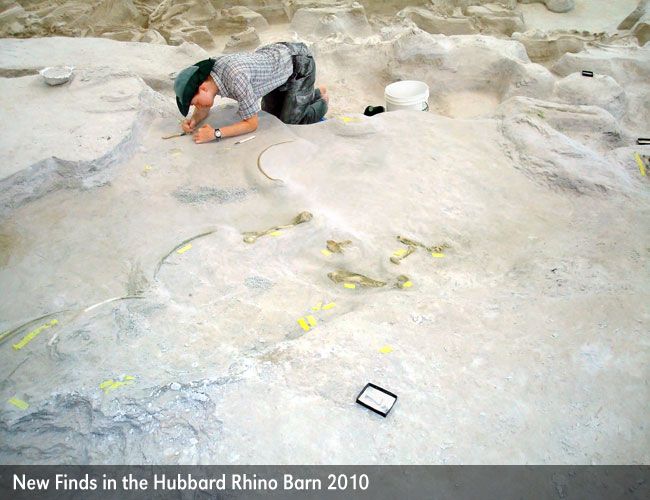
Maria B. revealing elements of scavenged rhino skeleton.
-
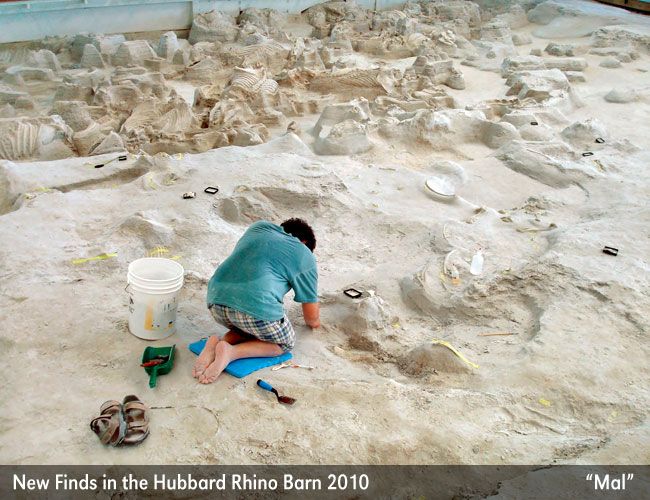
Ben. M. excavates subadult female Teleoceras Mal. The skull, lower jaws, and a foot are the only exposed bones of this rhino skeleton.
-

Small carnivore skeleton is nestled between rib cages of Mulder and Scully. (Possibly Cynarctus, a raccoon-like dog). Front of skeleton to be revealed during 2011 excavation.
-
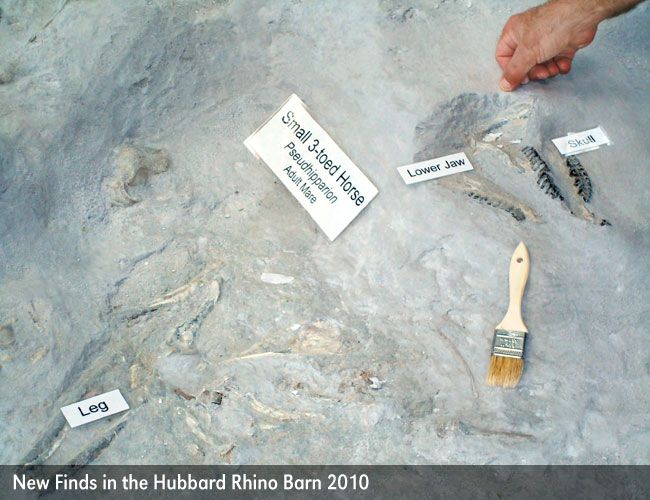
The remains of this horse are underneath Scully. Intern Bill M. discovered this skeleton in the process of revealing Scully.


